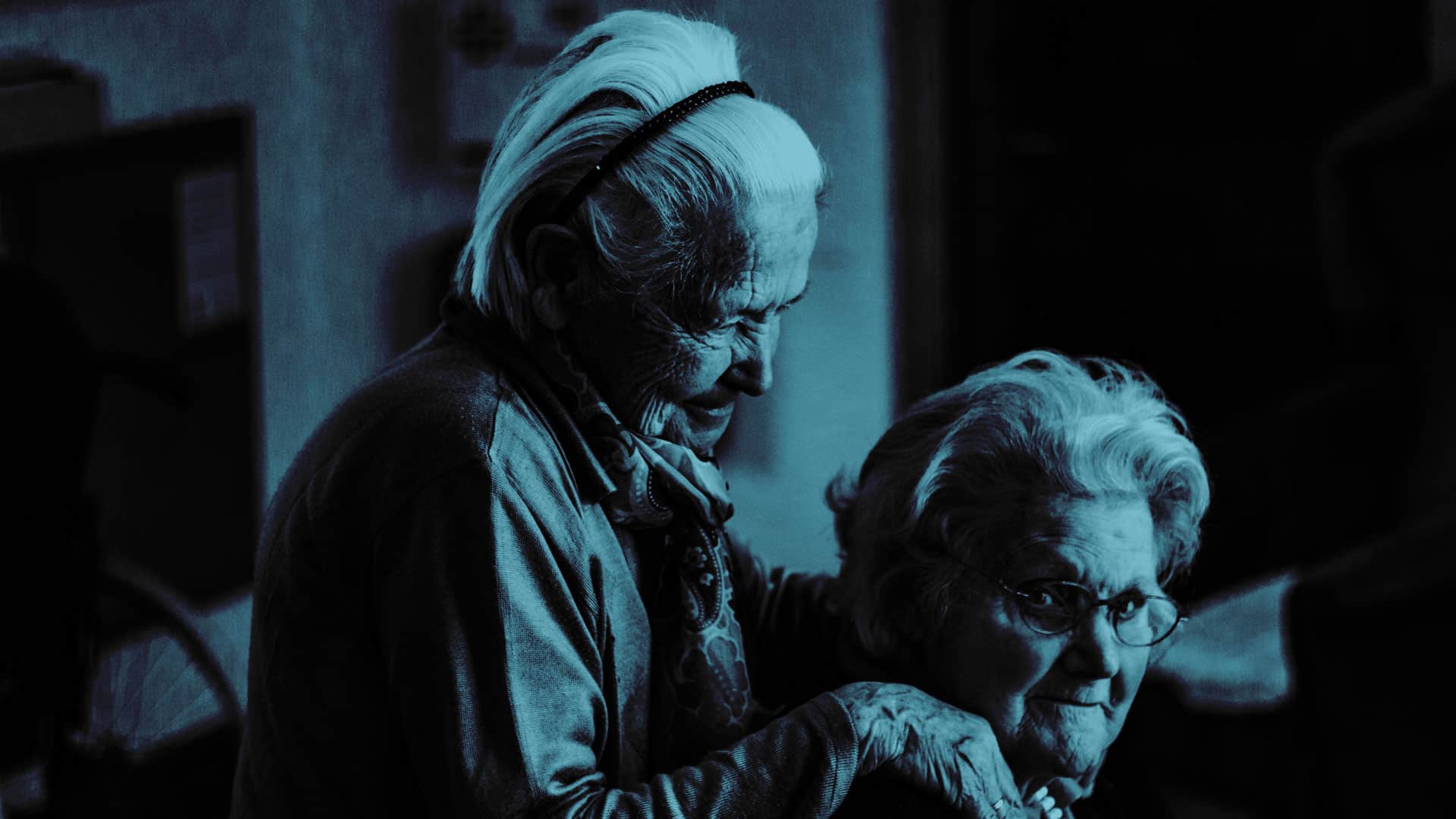

Older people who experience loneliness and social isolation are at risk of serious health risks such as dementia and other medical conditions. Dr Kristy Robson explains how you can help in your role.
Evidence suggests that around 25% of adults aged 65 and older are considered to be socially isolated. Older adults are more likely to be at risk of social isolation and loneliness because they are more likely to face factors such as loss of family and friends, living alone, hearing loss and chronic disease.
It is important to understand that feeling alone is not directly caused by social isolation – because loneliness is defined as the feeling of being alone, whereas social isolation is a lack of social connectedness. However, social isolation may lead to loneliness, but other older people may still feel lonely even though they are not socially isolated.
Well people are generally social in nature, and therefore high-quality social relationships can help individuals live healthier for longer. Allied health professionals and other health care systems are important, yet underused in supporting older people at risk. We can partner in recognising loneliness in older people and assisting with the prevention of medical conditions associated with social isolation and loneliness.
The final article for 2022 in this series on the topic of aged care explores the impact of social isolation and loneliness and the effects on the health wellbeing of our older clients. It highlights the importance of allied health professionals, such as podiatrists, in recognising loneliness and social isolation. As well as supporting older people through appropriate referral pathways to enhance social connection and engagement within the community.
In this article I will focus on:
We know that loneliness and social isolation can impact on both the physical and mental health of older Australians. However, the challenge in reporting on loneliness and social isolation is that there is a lack of universally-agreed upon definitions. In addition, some of the measures that were implemented to manage Covid-19, such as lockdowns and physical isolation, may have exacerbated pre-existing risk factors for some older people, particularly if they were living alone.
Social isolation can be defined as having minimal contact with others, whereas loneliness can be defined as a subjective state of negative feelings about having a lower level of social contact than desired.
Within the literature there are varying opinions with some authors perceiving loneliness as a form of social isolation, where others indicate that loneliness is an emotional reaction to social isolation. However, it is important to note that these two concepts do not necessarily co-exist, as an older person may be socially isolated but not lonely; conversely they can be socially connected but feel lonely.
It is actually quite hard to measure loneliness and social isolation, but what we do know is that many adults aged 50 years and older are socially isolated and/or lonely which puts them at greater risk of health concerns.
Evidence suggests that:
Although there is no guarantee that an individual’s family household composition or social network will either lead to or protect against loneliness, some living situations are more likely to be associated with loneliness than others.
Being older is also a strong predictor of loneliness, with people over the age of 80 twice as likely to suffer from severe loneliness than younger people. Living alone is a significant risk factor for both social isolation and loneliness. Relationship breakdown tends to result in an increase in loneliness across all ages, however the evidence suggests that these effects are more pronounced in men than women.
According to the ABS Census data, lone-person households are projected to make up 24% to 27% of all Australian households by 2041.
Allied health professionals, such as podiatrists, have a role in identifying older people who might be at risk of social isolation and loneliness; particularly given the regular contact that we have with older populations. We also have a role in encouraging older people to connect with supports and strategies that reduce their risk, including actively engaging with appropriate referral pathways to instigate support strategies.
Currently within Australia, General Practitioners provide health assessments for people aged 75 years and older and Aboriginal and Torres Strait Islander peoples aged 55 years and over.
If you identify clients who you consider may be at risk of social isolation and loneliness, these targeted assessments are well positioned to support referral strategies that can help to reduce this risk by highlighting your concerns with your client’s GP.
Key prevention strategies to reduce social isolation and loneliness also include re-engaging in paid part time work or volunteer work, as these have been shown to be important safeguards against loneliness and provide older people with the opportunity to undertake meaningful engagement. Evidence also suggests that maintaining active memberships of sporting or community organisations is also associated with reduced social isolation.
During the recent Covid-19 pandemic, the numbers of Australian adults undertaking voluntary work in the previous 12 months decreased from 36% in late 2019, down to 24% by April 2021. It has been reported that individuals who stopped volunteering were far more likely to say they felt lonely. In April 2020, 54% of Australians who stopped volunteering as a result of the Covid-19 pandemic – and did not start volunteering again once restrictions had eased – reported that they were lonely at least some time.
Evidence also suggests that having a companion animal can also assist in reducing loneliness. In 2018, 62% of Australian households owned a pet, with dogs and cats being the most prevalent. Around two-thirds of cat and dog owners indicate that the reason for owning a pet was for companionship, with some surveys indicating that around 60% of pet owners felt more socially connected as a direct result of owning their pet. Owning a pet has also been linked to increased social contact through engaging in with neighbours through conversations and this may help reduce social isolation.
Although we now recognise loneliness and social isolation as significant public concerns, there is still a lack of research on what are the best ways to resolve these issues. One way that has shown promise is social prescribing, where health professionals refer their clients to social supports within their communities.
Ensuring we are asking appropriate questions to understand whether our clients are lonely or socially isolated is a key initiative in supporting them, given the significant public health and wellbeing impacts. Ensuring you are aware of the local initiatives within your community to support social connection is also a useful strategy so you can engage in social prescribing for clients who are at risk.
Commonwealth, state and territory, and local governments all have provided varying degrees of funding to assist with specific support strategies at a local and community level – to address loneliness and social isolation.
Key initiatives to consider are:
The following further resources may also be useful.
© Copyright 2021 The Australian Podiatry Association
